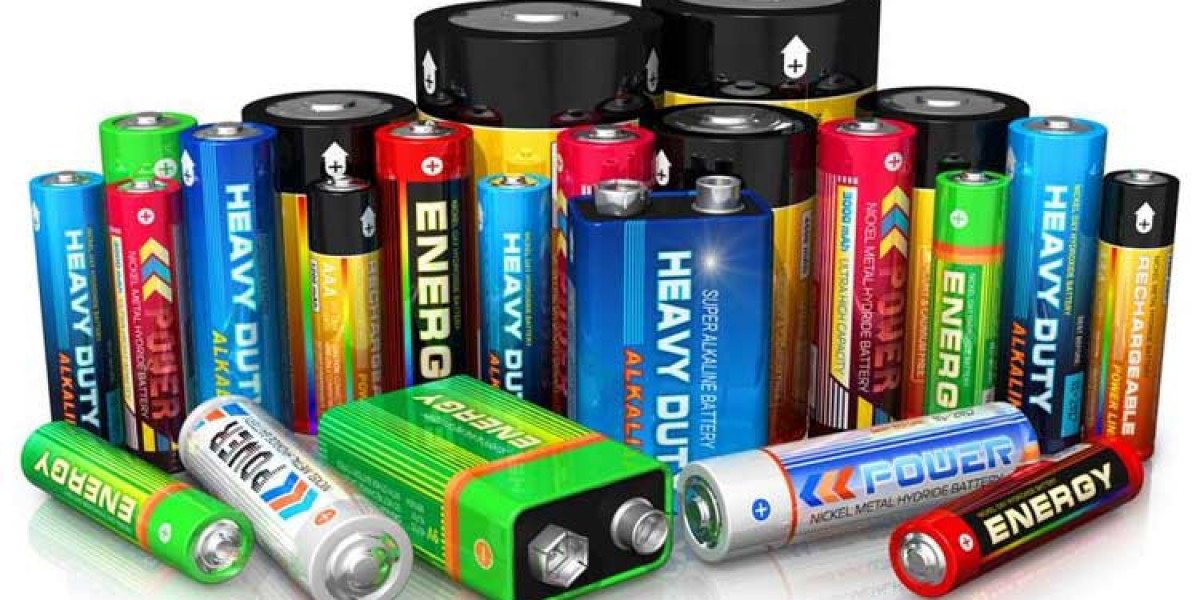Understanding the Dynamic Battery Market: Powering the Present and Future
In today's technology-driven world, batteries play a pivotal role in powering a wide range of devices, from smartphones and laptops to electric vehicles and renewable energy storage systems. The battery market has undergone significant growth and transformation, driven by advancements in technology, environmental concerns, and changing consumer demands. This comprehensive article delves into the various aspects of the battery market, its key players, trends, and the factors influencing its rapid evolution.
1. Evolution of Battery Technology: A Brief Overview
The battery market has evolved tremendously since its inception. From traditional lead-acid batteries to the cutting-edge lithium-ion batteries, technological innovation has been the driving force behind the industry's growth. The demand for higher energy density, longer lifespan, and faster charging capabilities has led to the development of various battery chemistries, each catering to specific applications.
2. Lithium-ion Dominance: Powering the Digital Age
Lithium-ion batteries have emerged as the frontrunners in the battery market, owing to their high energy density and versatility. These batteries have revolutionized portable electronics and have become the go-to choice for smartphones, laptops, and tablets due to their compact size and impressive performance. Their adaptability has further extended to electric vehicles (EVs) and renewable energy systems, playing a pivotal role in the transition towards a sustainable future.
3. Electric Vehicles: Accelerating Battery Demand
The surge in electric vehicle adoption has been a game-changer for the battery market. With global efforts to reduce carbon emissions and combat climate change, electric vehicles have gained immense popularity. This has resulted in a surge in demand for high-capacity lithium-ion batteries, spurring innovation in battery manufacturing, charging infrastructure, and overall EV performance.
4. Renewable Energy Storage: Enabling a Greener Tomorrow
Renewable energy sources like solar and wind have reshaped the energy landscape. However, their intermittent nature necessitates efficient energy storage solutions. Batteries have stepped up to this challenge by providing grid stabilization and energy storage capabilities. This synergy between renewable energy and battery technology is driving the growth of both sectors, creating a more sustainable energy ecosystem.
5. Key Players and Market Dynamics
The battery market boasts a diverse array of players, including industry giants and innovative startups. Established companies like Tesla, Panasonic, and LG Chem continue to shape the market with their cutting-edge advancements. Simultaneously, startups are driving innovation with breakthrough technologies, promising even more efficient, safer, and environmentally friendly battery solutions.
· Panasonic Corporation
· LG Chem
· Johnson Controls Inc
· Exide Technologies
· The Furukawa Battery Co. Ltd.
· Chaowei Power Holding Ltd.
· Penn Manufacturing Company Inc
· Fengfang Co. Ltd
· Saft Groupe
· Delphi Automotive
Market dynamics are influenced by a variety of factors, including raw material availability, manufacturing processes, geopolitical considerations, and consumer preferences. These elements contribute to the competitive landscape and can significantly impact pricing and market trends.
6. Sustainability and Environmental Concerns
As the battery market expands, so does the emphasis on sustainability. With a rising awareness of environmental issues, manufacturers are under pressure to develop batteries with minimal ecological impact. This has led to research into recycling methods, reduction of rare-earth element usage, and exploring alternative battery chemistries that are less harmful to the environment.
7. Innovations on the Horizon
The battery market continues to be a hotbed of innovation, with researchers exploring novel technologies that could reshape the industry. Solid-state batteries, for example, hold the promise of higher energy density, enhanced safety, and faster charging times. These innovations could potentially address current limitations and open new frontiers for battery applications.
8. Consumer Empowerment: Changing Dynamics
Consumers are increasingly becoming more informed about battery technology and its impact on their devices and the environment. This shift in consumer behavior is prompting manufacturers to prioritize transparency and provide information about battery life, recycling options, and the overall environmental footprint of their products.
9. Regulatory Landscape and Future Outlook
The battery market is not immune to regulatory shifts. Governments worldwide are introducing policies to promote cleaner transportation and energy storage. These regulations can influence battery manufacturing, recycling practices, and the adoption of emerging technologies. As the push for sustainability intensifies, the battery market size is expected to witness further innovation and growth.
10. Conclusion: Powering the Path Forward
The battery market's journey from conventional lead-acid batteries to advanced lithium-ion and emerging technologies reflects its resilience and adaptability. Batteries have become the backbone of modern society, enabling communication, transportation, and sustainable energy solutions. As technology continues to evolve and environmental concerns take center stage, the battery market will play a pivotal role in shaping a more sustainable and electrifying future.
In conclusion, the battery market's landscape is dynamic and ever-evolving, driven by innovation, consumer demand, and environmental consciousness. With lithium-ion technology leading the charge, electric vehicles, renewable energy storage, and countless portable devices are becoming increasingly efficient and accessible. As the industry forges ahead, collaboration between stakeholders, continued research, and an unwavering commitment to sustainability will be crucial to realizing the full potential of batteries in powering a brighter tomorrow.
Related Reports:








